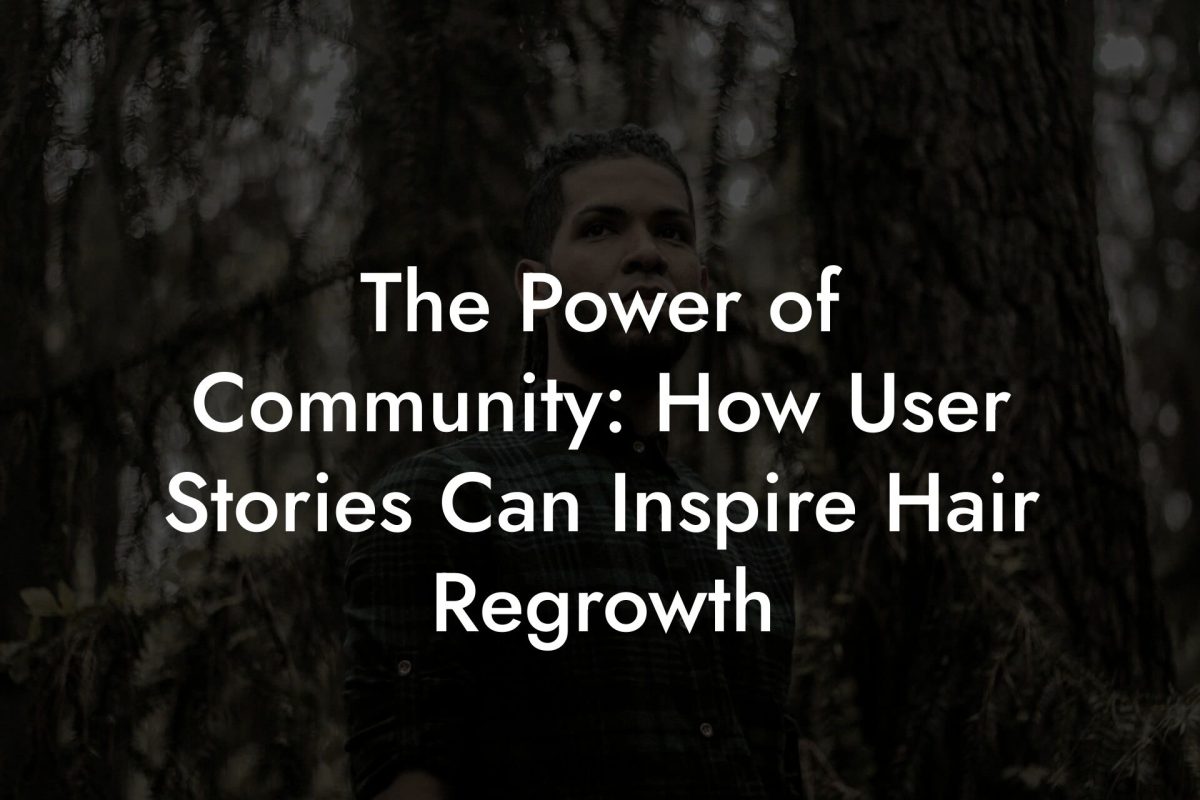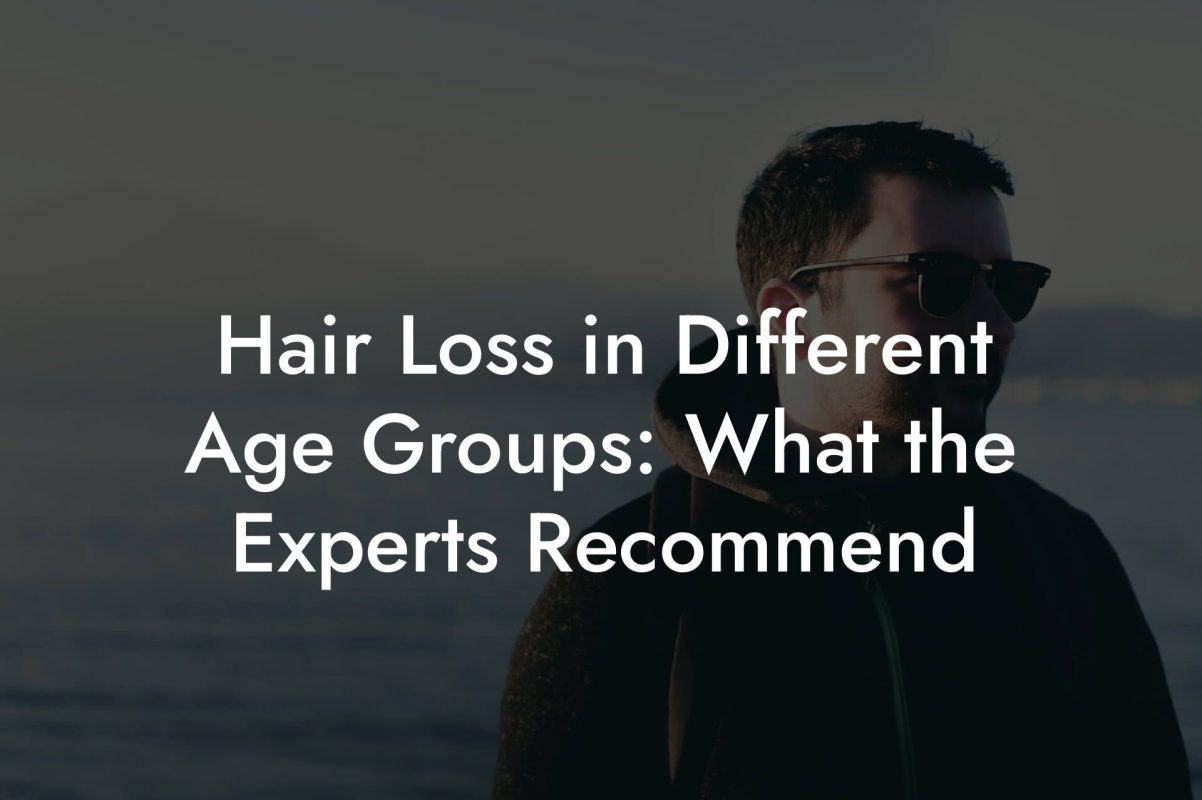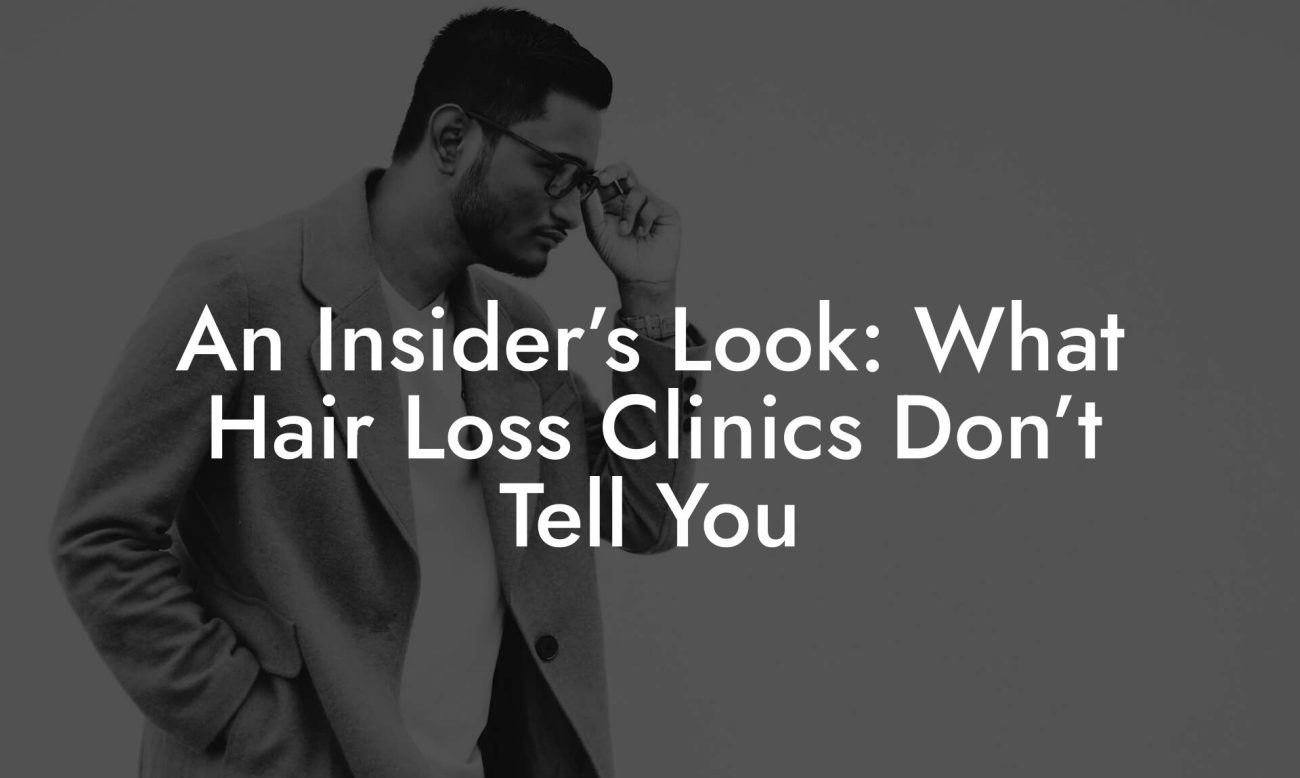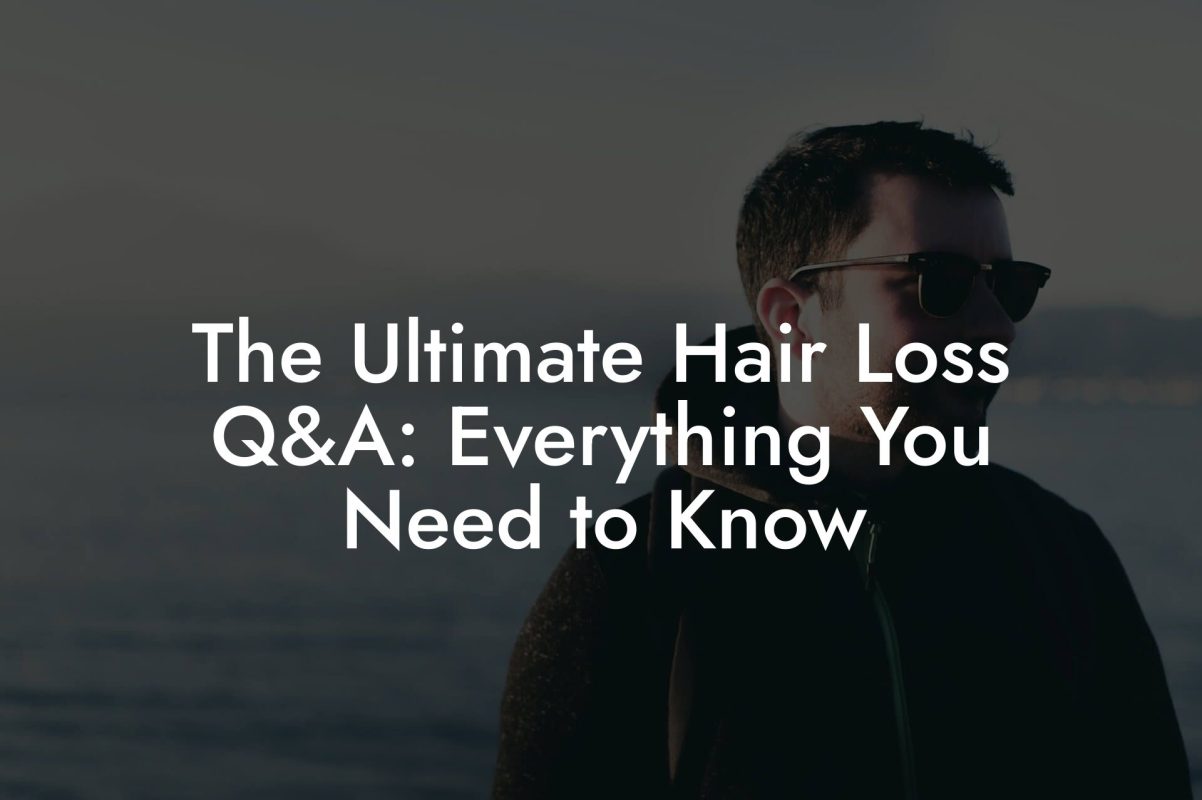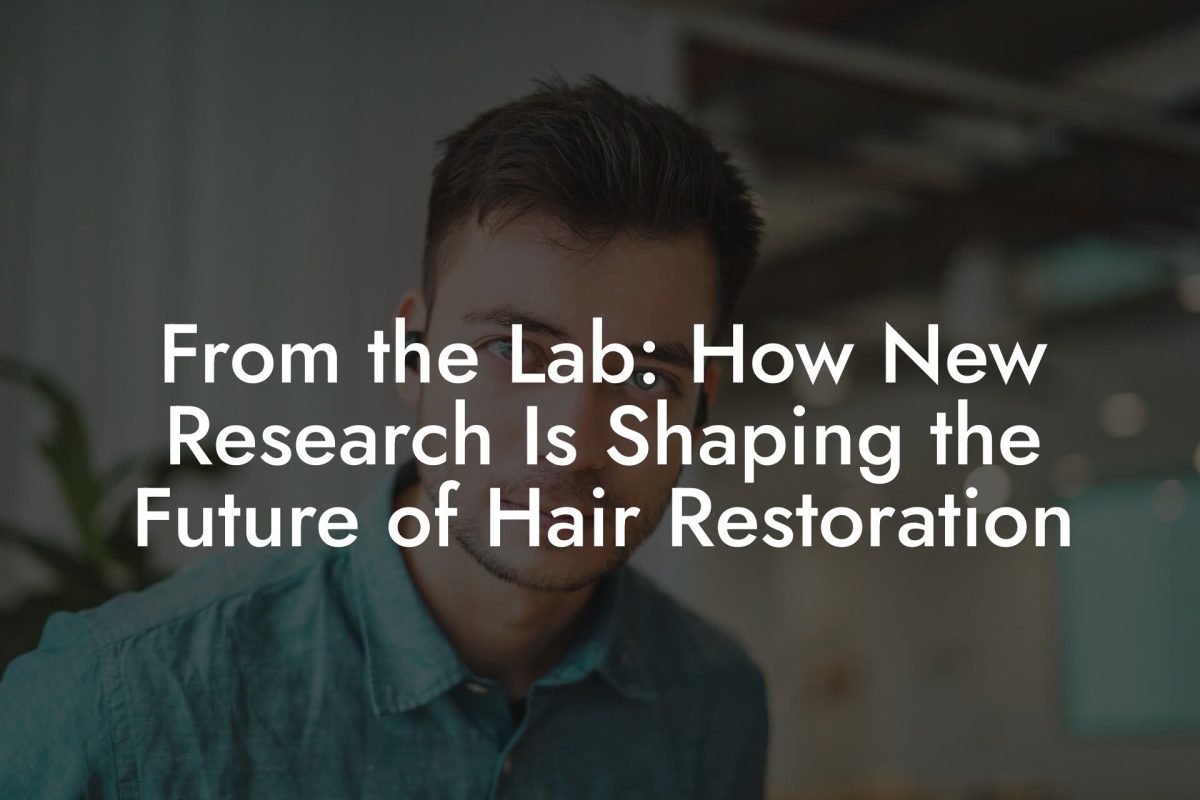Hair Loss Library
Roundtable: Experts Debate the Best Non-Surgical Hair Loss Treatments
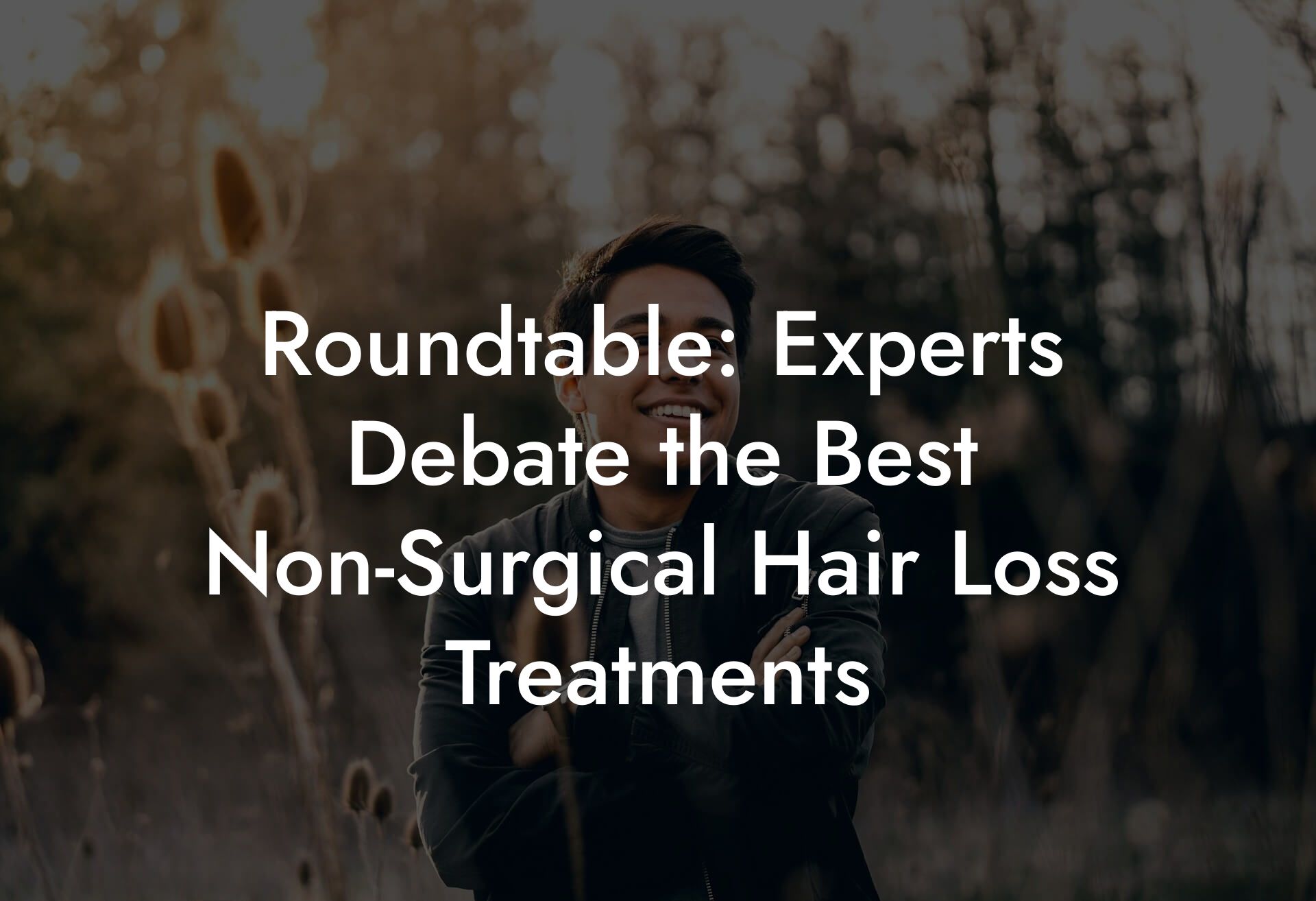
Ever wondered if your hairline’s staging its own dramatic comeback—or perhaps a subtle exit stage left? Welcome to our roundtable debate where top experts break down the best non-surgical hair loss treatments, with plenty of no-nonsense banter, real talk, and a dash of humor. Here at Mane Matrix, we get it: dealing with hair loss shouldn’t be as awkward as trying to explain why your barber vanished into thin air. Let’s dive into the latest, most talked-about, non-invasive solutions that are hitting the market and stirring up some serious chatter among industry experts and everyday dudes alike.
The Mane Matrix Roundtable: Why Non-Surgical Hair Loss Treatments Are a Game-Changer
Hair loss is not just a cosmetic concern—it’s an emotional rollercoaster that many men, especially Millennials and Gen Zers, are navigating every day. Traditional approaches like hair transplants and expensive surgical consultations often feel like an overkill for someone just trying to reclaim their confidence. Instead, a growing number of guys are opting for non-surgical treatments that are not only innovative and affordable but also come with fewer side effects. This roundtable brings together experts from dermatology, trichology, and holistic wellness to debate what’s hot, what’s not, and what actually works when it comes to shedding those unwanted receding edges.
In this candid discussion, our experts geek out over everything from laser therapy and topical solutions to the latest nutraceuticals and lifestyle hacks—each offering their own insights backed by clinical experience and personal anecdotes. Whether you're curious about low-level laser therapy (LLLT), buzzing about natural remedies, or just want to know which products are simply snake oil, this conversation is designed to make complex hair science clear and even fun.
Understanding Non-Surgical Hair Loss Treatments: The Basics
Before we jump into the debate, let’s break down what non-surgical hair loss treatments really are. At their core, these are therapies designed to promote hair growth, halt hair thinning, or even reverse some damage—all without the need for invasive procedures. Unlike hair transplant surgeries that often require a hefty investment and months of recovery, non-surgical options spotlight minimal downtime and less intimidating protocols that even your weekend DIY warrior can appreciate.
Non-surgical methods cover a broad spectrum of treatments, including:
- Low-Level Laser Therapy (LLLT): Using light energy to stimulate cellular activity and improve blood circulation at the scalp.
- Topical Applications: Far beyond your average hair tonic, today’s formulas include minoxidil alternatives, peptides, antioxidants, and natural extracts that target hair follicles at the molecular level.
- Prescription Medications: Although many are familiar with finasteride, the world of non-surgical treatments now includes a range of oral supplements and nutraceuticals that work from the inside out.
- Platelet-Rich Plasma (PRP): A minimally invasive procedure where your own blood components are harvested and re-injected into your scalp to boost hair regrowth.
- Emerging Technologies: Think microneedling devices, stem cell therapies, and even so-called “hair cloning” research that feels like it’s straight out of a sci-fi flick.
Understanding these basics sets the stage for our roundtable, where the debate isn’t just about what works but how these treatments stack up against one another in real-world scenarios.
Expert Spotlight: Breaking Down the Contenders
Our roundtable features a motley crew of experts—each with their own perspective and expertise—to provide a 360° view of the non-surgical hair loss landscape. Let’s meet the debaters:
- Dr. Harrison “The Crown” Ellison: A renowned dermatologist with a penchant for evidence-based treatments, Dr. Ellison has spent over 20 years fine-tuning protocols that combine clinical precision with patient comfort.
- Trichologist Riley Banks: With an unconventional approach and a deep understanding of hair biology, Riley’s insights bridge the gap between rigorous science and real-life hair struggles.
- Holistic Guru Marcus “Mane” Rivera: Not your typical hair expert, Marcus emphasizes a holistic and lifestyle-oriented approach, focusing on diet, stress management, and natural supplements to boost hair health.
- Biotech Innovator Dr. Sierra Chen: At the frontier of non-surgical technologies, Dr. Chen is passionate about the latest laser and microneedling devices, boasting a portfolio of groundbreaking research in hair regeneration.
These experts aren’t just throwing around theory—they’ve seen firsthand how these treatments impact men’s lives, and they’re here to share their no-holds-barred, sometimes spicy opinions on what truly delivers results.
Laser Therapy: The Bright Future of Hair Regrowth?
Laser therapy, or Low-Level Laser Therapy (LLLT), has been generating a ton of buzz in the non-surgical arena. The basic idea is that red and near-infrared light can trick your cells into ramping up production and repairing damaged hair follicles. Think of it as giving your scalp a high-tech pep talk.
Dr. Harrison “The Crown” Ellison explains, “LLLT is like a mini boot camp for your hair follicles. The light energy boosts cellular activity and improves circulation, which, in turn, creates a hair-friendly environment. It’s non-invasive with no downtime—that’s huge for men who can’t afford to miss a day at work or the gym.”
However, not everyone is sold on the miracle of lasers. Trichologist Riley Banks ranks it a solid B+, noting, “While there’s plenty of promising research, results can vary from person to person. It’s great as part of a comprehensive plan but maybe not the magic bullet on its own.”
From a budget perspective, laser devices come in all shapes and sizes—from professional in-clinic models to over-the-counter handheld devices. Marcus “Mane” Rivera humorously adds, “It’s a bit like choosing between a fancy sports car and a scooter: both will get you there, but the luxury model might just turn a few heads.”
Even if LLLT isn’t for everybody, the paradigm shift toward non-surgical techniques means individuals can experiment with different devices and regimens to find what best suits their unique hair biology and lifestyle.
Topical Treatments: Beyond the Ordinary Hair Serum
Next on the debate stage are topical treatments. These products have evolved far beyond the greasy serums of yesteryear. Today’s formulas are powered by a myriad of active ingredients designed to target hair loss at its root. Whether it’s a potent peptide complex, antioxidants derived from plant extracts, or nanotechnology-enhanced penetrative solutions, the modern topical is a far cry from your average bottle of hair tonic.
Dr. Chen notes, “We’re seeing formulations that not only stimulate hair growth but actively counteract the inflammation and oxidative stress that contribute to hair follicle miniaturization. It’s about giving your follicles the nutrients and signals they need to thrive.”
However, topical treatments are not without their controversies. Riley Banks highlights the challenge: “The variability is huge. Some products work wonders, while others might be overhyped. It’s important to look for clinical backing and user testimonials—not just slick marketing.”
Marcus “Mane” Rivera chips in with his trademark wit, “Consider it the multivitamin for your scalp. While you might not see a complete hair miracle overnight, consistency is key. A few drops a day can sometimes make a world of difference over several months.”
For men who prefer a hands-on, daily regimen, the convenience of a topically applied solution is hard to beat—no needles, no gadgets, just a bottle of scientifically formulated goodness.
Prescription Medications and Nutraceuticals: The Pill and the Plant
When it comes to combatting hair loss without surgery, prescription medications like finasteride and newer oral supplements play a starring role. While finasteride has long been the go-to option, its side effects and stigma have pushed many men to explore alternative nutraceuticals that work from within.
Dr. Ellison explains, “Finasteride works by reducing the conversion of testosterone into DHT—a major culprit behind male pattern hair loss. But not everyone can or wants to deal with the potential side effects. That’s where the new wave of nutraceuticals come in. They often contain a blend of vitamins, minerals, and herbal extracts that support healthy hair growth without the heavy-handed hormonal interference.”
Marcus Rivera adds, “I often recommend a customized stack of supplements, from biotin and zinc to saw palmetto and marine collagen. It’s like creating a smoothie for your follicles—every ingredient plays a part in keeping your hair game strong.”
While clinical results vary, and the jury is still out on long-term efficacy for some of these products, many men report noticeable improvements in hair thickness and overall scalp health. The key here is personalization: a treatment that works for one might not be the perfect match for another, so a bit of trial and error (with professional guidance) can go a long way.
This blend of traditional pharmacology and natural supplementation represents the latest frontier in non-surgical hair loss treatments—one that embraces both modern medicine and the wisdom of nature.
PRP and Microneedling: Reviving Your Scalp's Inner Genius
If you thought that platelets were only useful for mending cuts, think again. Platelet-Rich Plasma (PRP) therapy is one of the more intriguing non-surgical options on the market. By harnessing your body’s natural healing properties, PRP involves injecting concentrated platelets directly into the scalp to kickstart a regenerative process.
Dr. Chen enthusiastically explains, “PRP is essentially your body’s own bio-boosting cocktail. The growth factors found in platelets encourage hair follicles to re-enter the growth phase, making it a compelling option for those looking for a biological nudge in the right direction.”
In parallel, microneedling has emerged as a complementary treatment. This procedure uses tiny needles to create micro-injuries on the scalp, which in turn triggers the healing process. The result? Increased circulation, collagen production, and an overall rejuvenated scalp environment.
Riley Banks points out, “Both PRP and microneedling are about jump-starting the body’s natural repair mechanisms. They work best when combined with a solid topical or nutraceutical regimen. It’s a multipronged attack on hair loss, and while the science is still developing, early reports are promising.”
Although these procedures might sound a little sci-fi, they’re far less invasive than surgical options, and many men appreciate the idea of using their own biology to turn back the clock on hair loss.
Debunking Myths and Misconceptions: Separating Fact from Follicle Fiction
In any hotly debated topic, there are bound to be a few myths floating around—hair loss treatments included. Our experts are quick to call out some common misconceptions that can confuse even the savviest consumer.
Myth #1: “Non-surgical treatments work overnight.”
Reality: Hair growth is a slow process. Whether you’re using laser therapy or topical applications, consistency and patience are key. Results typically become visible after several months.
Myth #2: “There’s one magic cure for everyone.”
Reality: Hair loss is a multifactorial issue. Genetics, lifestyle, and even stress levels all play a part. What works for one person might not work for another, which is why a personalized approach is crucial.
Myth #3: “More expensive treatments always yield better results.”
Reality: While high-end treatments can offer additional benefits, they are not a guarantee of success. Evaluate the scientific backing, clinical studies, and real user reviews before investing in any treatment.
Our roundtable experts agree: the best approach is to remain informed, be skeptical of grandiose claims, and adopt a strategy that fits your unique needs. Remember, your hair is as individual as your fingerprint, and treating it like a one-size-fits-all problem is a recipe for disappointment.
The Future of Non-Surgical Hair Loss Treatments: Innovations on the Horizon
While our experts are currently dissecting the latest non-surgical solutions with enthusiasm, the future holds even more promise. From smartphone-controlled laser devices to AI-driven personalized treatment plans, the intersection between tech and hair care is booming.
Dr. Chen remarks, “We’re on the brink of a revolution in hair loss treatments. Emerging innovations are looking at genetic markers, personalized scalp diagnostics, and even wearable tech that monitors your hair health in real time. These advancements could make your current routine look like a relic of the past.”
Marcus Rivera envisions a landscape where your daily habits, diet, and even stress levels are analyzed to tailor a complete non-invasive treatment plan just for you. “Imagine a future where your smartwatch not only tracks your steps but also tells you if your hair follicles need a little extra love today. It sounds quirky, but it’s not far off!”
The rapid pace of technological advancement, combined with rigorous scientific research, is setting the stage for breakthroughs that could transform the way we approach hair loss. Innovation is not just about new gadgets; it’s about providing accessible, affordable, and genuinely effective solutions for everyday people.
Building a Personalized Non-Surgical Treatment Plan for You
By now, you might be wondering how to navigate this sea of options and select a treatment plan that’s tailor-made for your unique needs. Our experts agree on a few fundamental steps to craft a winning strategy:
Step 1: Get a Comprehensive Assessment
Kick things off with a thorough evaluation by a trusted hair loss specialist. This isn’t just about figuring out if you’re losing hair—it’s about understanding your overall scalp health, your genetic predisposition, lifestyle factors, and even diet.
Step 2: Set Clear and Achievable Goals
What are you aiming for? A denser hairline? Slowing down further thinning? Understanding your goals will help you and your healthcare provider choose the right blend of treatments—whether it’s laser therapy paired with a powerful topical or a cocktail of nutraceuticals.
Step 3: Explore a Multi-Pronged Approach
Given the multifactorial nature of hair loss, it’s rarely about one treatment alone. Consider mixing and matching: pair low-level laser therapy with a clinically validated topical, supplement your routine with nutraceuticals, and if you’re on board, add in a session of microneedling or PRP therapy.
Step 4: Commit to the Process
Your treatment plan should be as dynamic as your hair journey. It will require consistency and periodic tweaks as you monitor progress. Keep a diary or use digital apps to track results, symptoms, and any adjustments recommended by your provider.
Step 5: Lean on Professional Guidance
While the internet is a massive resource, personalized advice from professionals who understand the latest science is invaluable. A consultation with a specialist can help fine-tune your plan and ensure you’re on the right track.
This personalized approach is essentially the secret sauce behind successful non-surgical hair loss management. It’s not about chasing every trend but rather building a treatment regimen that fits your life, budget, and biological needs.
Real Talk: Anecdotes from the Mane Matrix Community
It’s one thing to hear expert opinions, but another to see real-life stories that prove these treatments work. The Mane Matrix community is buzzing with testimonials from men who've navigated the hair loss maze at their own pace.
Take Jake, a 29-year-old graphic designer from Austin. “I started with a basic laser cap and a topical serum recommended on Mane Matrix. The change wasn’t overnight—it took about six months—but steadily, I noticed less thinning and more hair density. It’s like my hair decided to RSVP to a comeback party!”
Then there’s Derek, a 35-year-old entrepreneur who integrated microneedling with nutraceutical support. “I was skeptical at first, but once I committed to the routine, the difference was undeniable. My hair feels thicker and stronger, and I have this extra boost of confidence every morning when I look in the mirror.”
These personal journeys highlight that while science and technology pave the way, real-life experiences remind us that persistence, patience, and the right mix of treatments truly make the difference. The Mane Matrix community isn’t just about treatments—it’s about reclaiming confidence, sharing struggles, and celebrating even the smallest wins on the road to hair health.
Resources and Community Support: Your Next Steps
If you’re feeling inspired and occasionally overwhelmed by the wealth of information out there, remember that you’re not alone. The Mane Matrix community is a vibrant space where you can connect, share your journey, and get practical advice from fellow men who are navigating the same hair loss maze.
Here are some actionable next steps to help you get started:
- Join our Online Forum: Dive into discussions, ask questions, and connect with other men who have firsthand experience with non-surgical hair loss treatments.
- Attend Virtual Webinars: Our experts regularly host live sessions where they share new research, answer audience questions, and provide real-world insights into successful hair regrowth strategies.
- Download Our Free Guide: “The Ultimate Non-Surgical Hair Loss Blueprint” is packed with tips, treatment comparisons, and personalized advice to help you craft a plan that works for you.
- Schedule a Virtual Consultation: Skip the awkwardness of in-person visits. Mane Matrix offers confidential online consultations to get you started on the right foot—without the hassle or high costs.
- Explore Our Blog: Our regularly updated blog covers the latest news, product reviews, and expert interviews on non-surgical treatments, ensuring you stay ahead of the curve.
By tapping into these resources, you’ll not only get informed but also become a part of a supportive community dedicated to challenging the stigma around hair loss and celebrating each step of your personal journey.
Expert Roundtable Recap: Debates, Insights, and Key Takeaways
After a robust discussion spanning cutting-edge laser technologies, next-generation topicals, and a balanced approach blending science with holistic care, our panel of experts has distilled some key takeaways:
- No One-Size-Fits-All: The best non-surgical hair loss treatment plan is highly personalized. It often requires a combination of therapies designed to work synergistically with your unique hair biology and lifestyle.
- Persistence Pays Off: Hair restoration is a gradual process that demands commitment and consistency. Results typically manifest over months rather than weeks.
- Holistic Health Matters: From stress management and nutrition to sleep and overall wellness, every aspect of your lifestyle plays a role in hair health. Integrating these elements can enhance treatment outcomes.
- Embrace Innovation: With new technologies emerging all the time, staying informed and experimenting responsibly can uncover effective solutions that might have once seemed futuristic.
- Trust the Experts—and Your Gut: While clinical data is invaluable, your personal experience and comfort with a treatment are equally important. Combine professional advice with your own observations for the best results.
This dynamic exchange underscores that the non-surgical realm is full of promise and that tailoring a treatment plan around your individual circumstances is the cornerstone of sustained hair health.
Frequently Asked Questions About Non-Surgical Hair Loss Treatments
Below are some frequently asked questions that our community and experts have discussed in detail. Whether you’re a skeptic or simply curious, these questions cover a wide range of topics to help guide you on your hair restoration journey.
1. How long does it typically take to see results from non-surgical hair loss treatments?
Most treatments, whether it’s laser therapy, topicals, or nutraceuticals, usually require at least three to six months before noticeable improvements occur. Consistency is key!
2. Are these treatments safe to use in combination?
Yes. In fact, many experts recommend combining different non-surgical treatments to address hair loss from multiple angles. However, it’s best to consult with a specialist to tailor a regimen that suits your specific needs and avoids potential interactions.
3. Can lifestyle changes really impact hair loss?
Absolutely. Diet, exercise, stress management, and quality sleep can have a significant impact on overall hair health. A holistic approach often enhances the effectiveness of direct treatments.
4. Is low-level laser therapy (LLLT) effective for everyone?
While many men see improvements with LLLT, individual results vary. Factors like genetics, the stage of hair loss, and overall health play a role in determining how effective this treatment will be.
5. What should I look for in a topical treatment?
Look for products backed by clinical research that contain proven active ingredients like peptides, antioxidants, and botanical extracts. User reviews and dermatologist recommendations are also important guides.
6. Are nutraceuticals a worthwhile addition to a hair loss regimen?
Many men find that nutraceuticals help by addressing the internal factors contributing to hair loss. They can support overall scalp health and work synergistically with other treatments.
7. Can PRP and microneedling be done at home?
PRP should always be performed by trained professionals in a clinical setting, while microneedling devices for home use are available. Nonetheless, proper sterilization and technique are crucial if you opt for an at-home option.
8. How do I know which treatment is right for me?
Start with a comprehensive assessment by a hair loss expert. Consider factors such as the stage of hair loss, underlying health conditions, and lifestyle preferences before finalizing your treatment plan.
9. Do non-surgical treatments work better for early hair loss?
Early intervention can often yield better results. Addressing hair loss before significant thinning occurs may help preserve and even regrow hair more effectively.
10. Is there any downtime associated with these treatments?
The beauty of non-surgical treatments is minimal to no downtime, making them ideal for men with busy schedules who need to keep their routine uninterrupted.
Your Next Step: Harnessing Knowledge to Transform Your Hair Journey
At the end of the day, dealing with hair loss is as much about reclaiming your confidence as it is about finding the right treatment. Whether you opt for high-tech laser devices, potent topicals, or a multi-layered approach combining several non-surgical treatments, remember that the journey is uniquely yours.
The expert roundtable has laid out the evidence, shared personal testimonies, and debunked common myths, but the power to choose—and change—is firmly in your hands. Embrace the knowledge, experiment wisely, and connect with a community that understands the ups and downs of hair restoration. Every step you take is a step toward a more confident, authentic you.
So go ahead—check out our resources, join the conversation, and let Mane Matrix be your partner in this journey to not just a fuller head of hair, but a fuller life. Your mane matters, and so does your story. Here’s to taking charge of your hair destiny—one informed, bold step at a time.
If you loved this article... Dive deeper into the world of mens hair loss with our most popular sections. If there is anything you think is missing or anything you would love for us to write about, just give us a shout.
Expert Interview: Leading Dermatologists Discuss Men’s Hair Loss Solutions
Case Study: How One Man Reversed His Hair Loss Naturally
Hair Loss FAQs: Your Top Questions Answered by Experts
Behind the Scenes: A Day in the Life of a Hair Transplant Surgeon
Success Stories: Real Men Share Their Hair Regrowth Journeys
Debunking Hair Loss Myths: Insights from Top Trichologists
The Role of Genetics: Experts Weigh in on Inherited Hair Loss
How Lifestyle Changes Made a Difference: Inspiring Hair Regrowth Stories
In-Depth Q&A: What Every Man Should Ask Before a Hair Transplant
Roundtable: Experts Debate the Best Non-Surgical Hair Loss Treatments
From the Lab: How New Research Is Shaping the Future of Hair Restoration
Personal Journeys: Overcoming Hair Loss and Embracing Confidence
The Ultimate Hair Loss Q&A: Everything You Need to Know
An Insider’s Look: What Hair Loss Clinics Don’t Tell You
Expert Tips for Maximizing Hair Restoration Treatment Results
Hair Loss in Different Age Groups: What the Experts Recommend
Addressing Scalp Concerns: A Comprehensive FAQ for Men
Analyzing Competitor Gaps: How Mane Matrix Stands Out in Hair Loss Content
The Power of Community: How User Stories Can Inspire Hair Regrowth
Future Forecast: What Experts Predict for Men’s Hair Loss Treatments






